Pallet Inverter: How to Rotate High-Value Electronics Pallets Safely?
Handling a pallet of high-value electronics feels like holding your breath. You know that a single slip, a moment of imbalance, or a clumsy rotation could wipe out tens of thousands of dollars in an instant. The pressure on your team is immense. Manual handling is slow, risky, and a constant source of anxiety. What if a box tips? What if the pallet breaks mid-lift? This isn't just about moving products; it's about protecting significant financial assets, and the traditional methods just aren't good enough.
To rotate high-value electronics pallets safely, you need a specialized pallet inverter. This machine securely clamps the entire load from the top and bottom, uses a smooth, controlled hydraulic or electric system to rotate it 180 degrees, and allows for the safe and quick exchange of the pallet. This process eliminates manual lifting, prevents product shifting, and dramatically reduces the risk of damage.
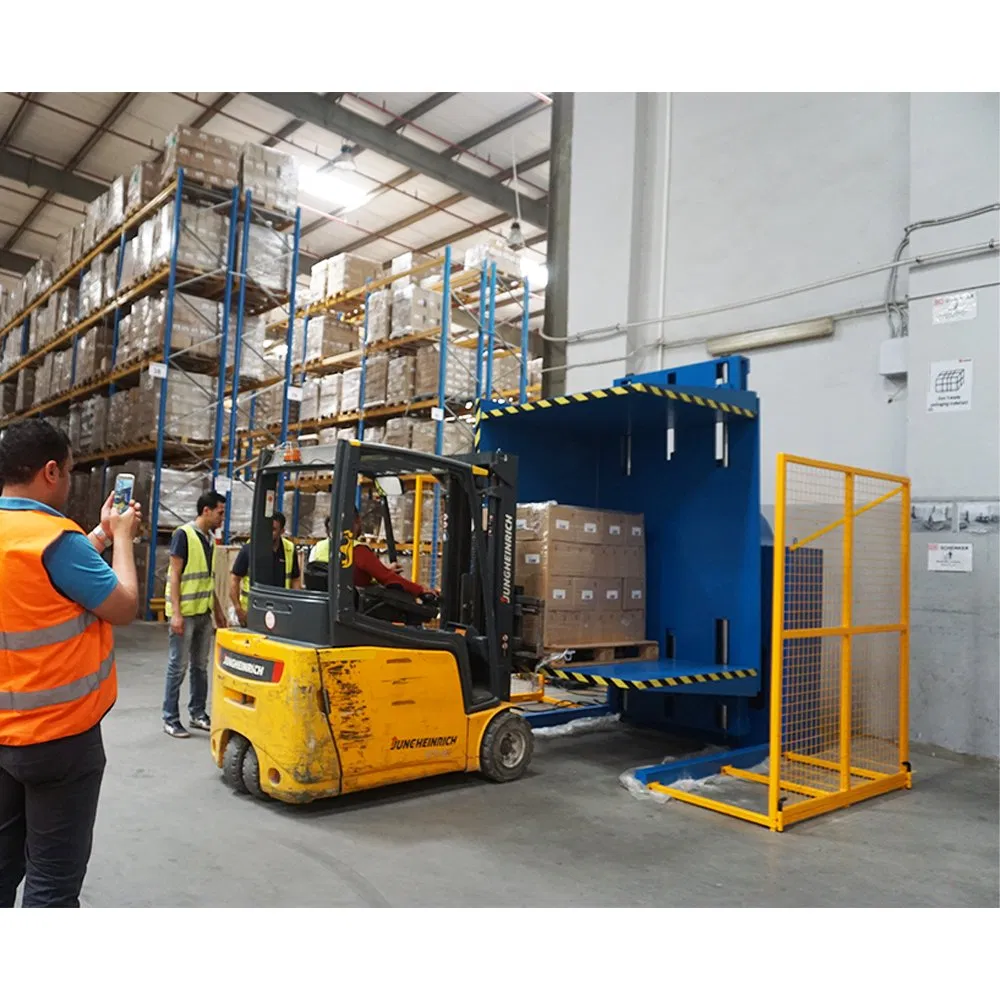
I've seen firsthand how a simple operational challenge can become a major bottleneck. The solution seems simple, but the details are what separate a smart investment from a future headache. The right equipment doesn't just solve a problem; it creates new efficiencies and gives you peace of mind. Let's break down what you need to know to make the right choice for handling your valuable electronic goods.
What are the key safety features to look for in a pallet inverter?
You've identified that you need a pallet inverter, but now you face a market full of options. Choosing the wrong one, perhaps based on price alone, can introduce even more risk than manual handling. Imagine a machine with weak clamping pressure dropping a pallet of servers, or a system with no safety guards injuring one of your best operators. This is not a theoretical risk; it's a real consequence of overlooking critical safety features. To truly protect your products and your people, you must know exactly what to look for.
The most critical safety features in a pallet inverter are adjustable clamping pressure, comprehensive safety guarding with interlocked doors or light curtains, a robust and stable frame, and easily accessible emergency stop (E-stop) buttons. These features work together to ensure the load is secure, operators are protected during the rotation cycle, and the machine can be shut down instantly in an emergency.
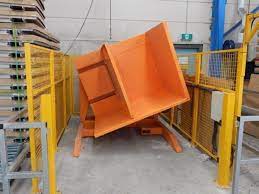
Choosing a machine is about more than just its basic function. It's about building a safe and reliable process. In my years of designing and building machinery, I've learned that the features that prevent disaster are the most valuable ones. Let’s dive deeper into the specific safety components that you should consider non-negotiable.
The Critical Role of Adjustable Clamping Pressure
For high-value electronics, one size does not fit all. This is why adjustable clamping pressure is the most important feature. Imagine you are handling a pallet of sturdy, well-packaged power supplies. You need firm pressure to hold them securely. Now, imagine the next pallet contains delicate circuit boards or sensitive monitoring equipment in thinner boxes. Using the same high pressure would crush the packaging and damage the components inside. A quality pallet inverter allows the operator to set the clamping pressure precisely for each type of load. This is usually managed through a simple interface, taking the guesswork out of the operation. This single feature is the primary defense against product damage during the inversion process. It ensures that every pallet, regardless of its contents, is held with the perfect balance of security and care.
Comprehensive Guarding and Failsafe Systems
A powerful machine needs powerful safety protocols. Operator safety is paramount. Look for pallet inverters enclosed in high-visibility safety fencing. Access doors should be equipped with safety interlocks. These are switches that automatically stop the machine's cycle if a door is opened. This prevents an operator from accidentally walking into the machine's operational area during rotation. For more advanced or automated setups, light curtains are an excellent alternative. They create an invisible barrier of infrared light; if the beam is broken by a person or object, the machine stops immediately. Furthermore, every machine must have clearly marked, easily accessible emergency stop buttons. In case of any unexpected event, anyone in the vicinity should be able to halt all movement instantly. These systems aren't just features; they are essential for creating a safe working environment and meeting workplace safety regulations.
Structural Integrity and Control Logic
The foundation of safety is a well-built machine. The inverter’s frame must be constructed from heavy-gauge steel to handle the dynamic forces of rotating a heavy load. A weak or unstable frame can flex or fail, leading to catastrophic results. Beyond the physical build, the control system, or PLC (Programmable Logic Controller), is the machine's brain. A reliable PLC ensures a smooth, predictable rotation cycle every time. It also manages the failsafe logic. For instance, what happens if the facility loses power mid-rotation? A well-designed system will ensure the load is held securely in its position, preventing it from dropping. It won't attempt to return to start or release the clamp. This level of engineering detail is what separates a truly safe machine from a potential liability.
| Feature | Basic System (Lower Cost) | Advanced System (Recommended for High-Value Goods) |
|---|---|---|
| Clamping Pressure | Fixed or manual crank adjustment | Electronically adjustable with pre-sets for different products |
| Safety Guarding | Optional or basic railing | Full steel mesh caging with safety interlocked doors or light curtains |
| Control System | Simple push-button controls | PLC with touchscreen interface, diagnostic feedback, and power-loss failsafes |
| Emergency Stop | Single E-stop button on the main panel | Multiple E-stop buttons placed at key operational and access points |
| Load Handling | Basic platform | Platforms designed to reduce pressure points, often with V-shaping for stability |
How does a pallet inverter improve operational efficiency and reduce costs?
Every manager knows that time is money, and so is damaged product. Your current process for dealing with broken pallets or transferring loads is likely a drain on both. You might have two or three employees spending 15-20 minutes manually re-stacking a pallet, box by box. This stops other work, introduces the risk of injury, and every box they touch is a chance for a drop or damage. The costs are hidden in labor hours, damaged goods write-offs, and operational bottlenecks. You need a way to turn this slow, costly process into a fast, efficient, and safe one.
A pallet inverter transforms this entire operation. It improves efficiency by reducing a 20-minute, multi-person task to a 2-minute, single-person job. This directly reduces labor costs. It also drastically cuts costs associated with product damage by eliminating manual handling. This speed and safety clear bottlenecks in your warehouse, increasing overall throughput and making your entire operation more profitable.
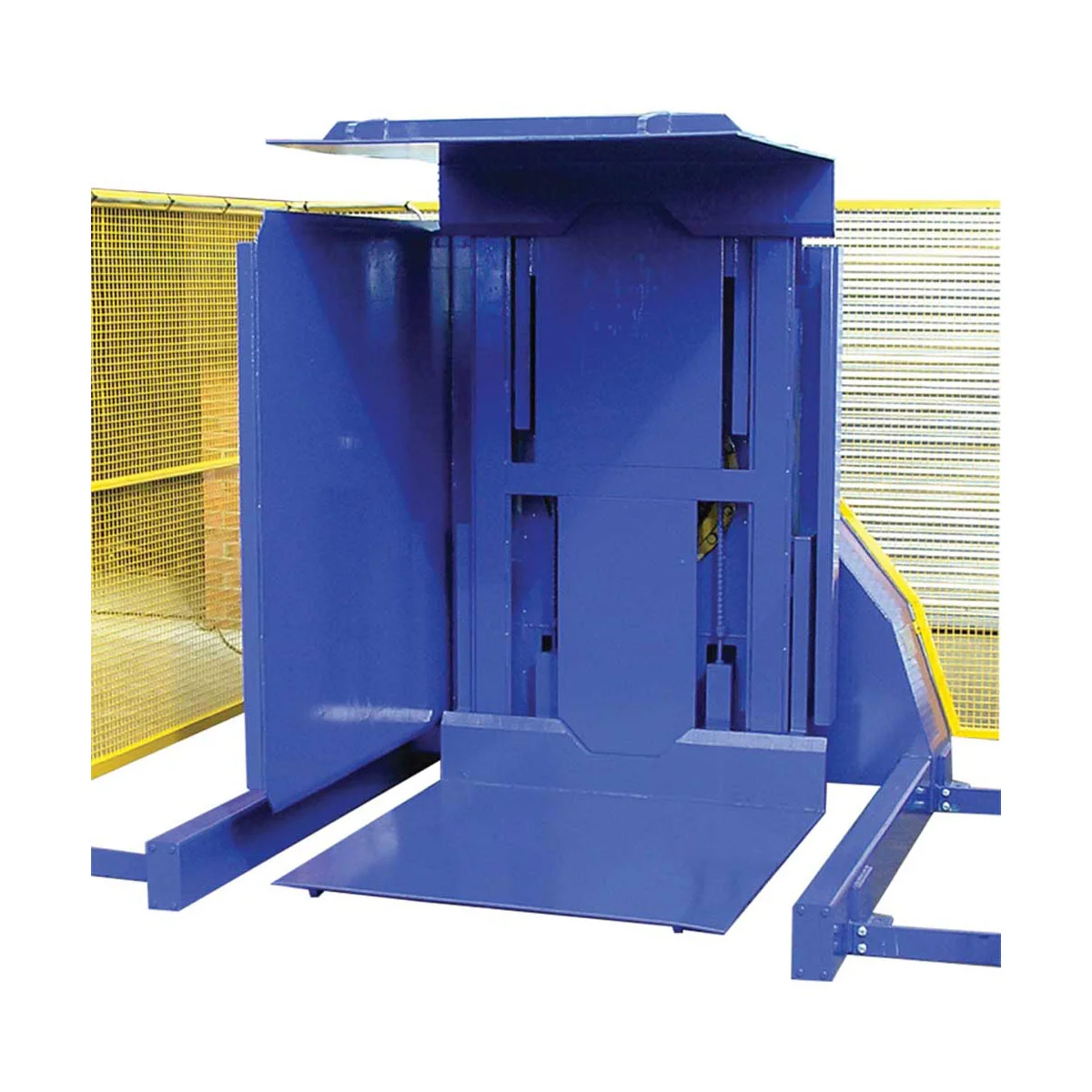
When I was running my own factory, I obsessed over efficiency. I learned that the biggest gains often come from fixing the small, recurring problems. A slow pallet changeover might seem minor, but when it happens several times a day, the wasted time adds up fast. Let's look at the specific ways an inverter can directly impact your bottom line.
A Direct Impact on Labor Costs and Time
The most immediate return on investment comes from labor savings. Let’s do some simple math. Suppose you need to swap 10 pallets per day. Manually, this might take two workers 15 minutes per pallet. That's 30 man-minutes per pallet, or 300 man-minutes (5 hours) per day spent just on this task. With a pallet inverter, one worker can do the same job in about 2 minutes. That's 20 minutes for all 10 pallets. You've just reclaimed 4 hours and 40 minutes of productive labor time, every single day. This time can be reallocated to value-added activities like order picking, quality control, or shipping preparation. The machine pays for itself quickly just in saved wages, not to mention the reduction in physical strain and potential for worker injury associated with repetitive heavy lifting.
Slashing the Hidden Costs of Product Damage
For high-value electronics, the cost of one damaged item can be staggering. A single crushed box could contain a server, a medical device, or a complex controller worth thousands of dollars. Manual re-stacking is fraught with risk. Boxes can be dropped, internal components can be shaken loose, and electrostatic discharge can occur. A pallet inverter minimizes this risk by treating the entire pallet as a single, stable unit. The load is never handled piece by piece. By securing the load and rotating it smoothly, the inverter almost completely eliminates the possibility of damage during a pallet exchange. Saving just one or two pallets of high-value goods from damage could easily justify the entire cost of the machine. This doesn't even account for the "soft" costs of damage: the administrative time spent on claims, the damage to your brand's reputation, and the cost of reverse logistics.
Unlocking Warehouse and Production Throughput
Bottlenecks kill productivity. A delay in one area can have a ripple effect throughout your entire facility. A pallet arriving on a damaged pallet at the receiving dock can hold up an entire truck from being unloaded. A product that needs to be transferred to a cleaner, captive pallet before entering a cleanroom can create a long queue. A pallet inverter solves these problems by turning a slow point into a fast-moving transition. Loads can be quickly transferred to warehouse-standard pallets upon arrival. Broken pallets can be swapped out in minutes without disrupting the flow. Products can be moved to specialized pallets (like plastic or CHEP) for shipping or specific environments efficiently. This enhanced flow means trucks spend less time at the dock, production lines are supplied faster, and orders get out the door on schedule. It transforms the pallet exchange process from a problem area into a smooth, integrated part of your operation.
What is the process for integrating a pallet inverter into an existing production line?
You see the value of a pallet inverter, but a new concern arises: how will this machine fit into my facility? You have an established workflow, and the thought of a complex installation project causing major disruption is a serious concern. A machine that sits in a corner, unused because it's too difficult to access or it slows down the line, is a wasted investment. You need a clear, predictable path from purchase to full operation, one that minimizes downtime and ensures the machine becomes a seamless part of your daily process.
The integration process should be a planned, collaborative effort between you and your supplier. It starts with a thorough site assessment to understand your space and workflow. This is followed by system design, which might include customizing infeed and outfeed options like conveyors. The final steps are professional installation, commissioning with your actual products, and comprehensive training for your operators and maintenance staff. A good partner guides you through every step.
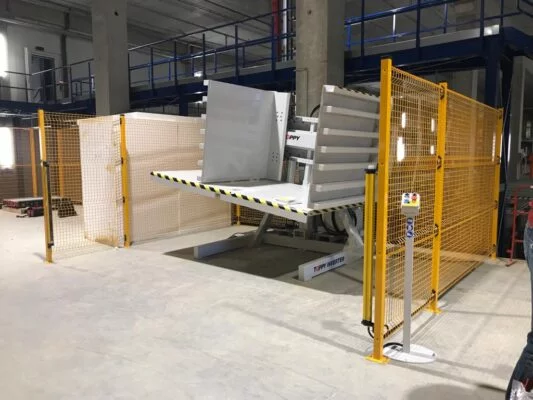
I always tell my clients that our work together begins, not ends, with the sale. A successful installation is just as important as a well-built machine. It requires planning and communication. A strategic partner won't just sell you a machine; they will help you make it a successful part of your business. Let’s walk through what that process should look like.
Step 1: Site Assessment and Workflow Analysis
This is the most critical phase. Before any machine is chosen, a true partner should want to understand your operation. This might involve a site visit or a detailed review of facility layouts and videos. We need to answer key questions together. Where is the logical point to place the inverter? At the receiving dock, before the racking area, or at the shipping station? How will pallets be brought to and from the machine—by forklift, pallet jack, or an automated guided vehicle (AGV)? What is the available floor space and height? Understanding these factors determines the right model (e.g., a ramp-loaded machine vs. a forklift-loaded one) and configuration. This initial analysis prevents costly mistakes, like buying a machine that is too large for the space or that disrupts the natural flow of traffic in your warehouse.
Step 2: System Design and Customization
Once the workflow is understood, the system can be designed. A standalone pallet inverter is a great start, but true efficiency often comes from integration. This is where we discuss options. Does it make sense to add gravity or powered conveyors on the infeed and outfeed sides? This allows an operator to stage the next pallet while the current one is being inverted, creating a continuous flow. For a more automated facility, the pallet inverter's PLC can be programmed to "handshake" with your existing Warehouse Management System (WMS) or Manufacturing Execution System (MES). This allows the inverter to become an intelligent node in your digital ecosystem, which aligns with goals like the digital transformation that forward-thinking leaders like Mr. Morales champion. Customization ensures the machine is not just placed in your facility but is truly integrated into it.
Step 3: Installation, Commissioning, and Training
The final phase is bringing the machine to life. Professional installation is key. This is not a simple "plug and play" device. The team should ensure the machine is properly anchored, leveled, and all electrical and safety connections are secure. Following installation is commissioning. This means testing the machine with your actual pallets and products, not just empty test runs. We would fine-tune the clamping pressure and cycle speed to match your specific needs. The last, and perhaps most important, part is training. We must train not only the operators on how to use the machine safely and efficiently but also the maintenance team. They need to understand the basic mechanics, lubrication schedules, and troubleshooting procedures. Proper training ensures you get the most out of your investment for years to come and fosters a sense of ownership among your staff.
| Integration Phase | Key Activities | Responsibility (Client) | Responsibility (Supplier/Partner) |
|---|---|---|---|
| 1. Assessment | Site visit/layout review, workflow analysis, space measurement. | Provide access, share workflow data and goals. | Conduct analysis, ask questions, recommend options. |
| 2. Design | Machine selection, conveyor and automation design, PLC integration planning. | Approve final design and layout. | Create drawings, specify customizations, plan integration. |
| 3. Implementation | Delivery, installation, commissioning, testing with real products. | Prepare the site (power, floor space). | Manage logistics, install, commission, and validate. |
| 4. Handover | Operator training, maintenance training, documentation delivery. | Schedule staff for training sessions. | Conduct comprehensive training, provide manuals. |
My Perspective: Beyond the Machine – A Partnership for Growth
Over the years, many people have come to me looking for a machine. They have a problem, and they believe a piece of equipment is the entire solution. They compare spec sheets and price tags, and they often lean towards the cheapest option. I understand the pressure to manage costs. But my journey, from an engineer on the factory floor to building my own successful company, has taught me a powerful lesson: the machine is only part of the answer. A cheap machine with no support, no expertise behind it, can become your most expensive problem.
My experience has shown me that the best investment is never just in steel and motors; it's in a reliable solution backed by a partner who understands your world. For a leader managing a large-scale operation, whether it's a steel mill or an electronics distribution center, the challenges are similar. You need reliability, efficiency, and a partner who can help you navigate the future, from maintenance to digital transformation.
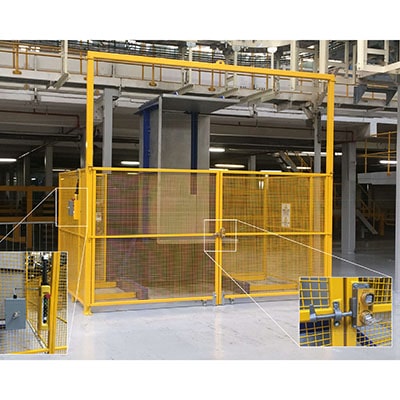
I built my business, SHJLPACK, on this principle. The slogan, "TOTAL SOLUTION FOR WRAPPING MACHINE," isn't just marketing. It’s a promise. When I work with a client, I see their challenges as my own. I started as an employee in a packing machine factory. I saw firsthand what happens when a critical machine fails and there’s no one to call for help—production stops, orders are delayed, and management is under fire. When I finally had the chance to build my own factory, I swore I would be a different kind of supplier. I would be a partner.
I achieved my own financial independence because of the opportunities this industry gave me. Now, my mission is to give back, to share the knowledge I've gained to help others succeed. When a client like Javier Morales comes to me, I don't just see a steel mill owner. I see a fellow engineer and entrepreneur who has built something from the ground up. I recognize his journey from the factory floor to the boardroom. I understand his pressures—the rising energy costs, the aging equipment, the need to digitize to stay competitive.
The principles of handling valuable goods are universal. Whether you're carefully maneuvering a 20-ton steel coil or rotating a pallet of delicate servers, the core requirements are the same: absolute safety, unwavering reliability, and maximum efficiency. A failure in either scenario is a major financial and operational blow. A modern, efficient pallet inverter directly addresses the challenges of an operation like Javier's. It's more energy-efficient than older equipment or manual processes. It replaces an aging, unreliable manual workflow with a predictable, automated one. It's a step forward in the digital transformation journey, a piece of smart equipment that can be integrated into a larger system.
This is why I believe in a partnership approach. My goal is to understand your entire operation. To provide a solution that not only solves the immediate problem of rotating pallets safely but also contributes to your larger goals of reducing costs, increasing uptime, and making your facility smarter and safer. That is the total solution I am dedicated to providing.
Conclusion
A pallet inverter is essential for safely handling high-value electronics. Choosing the right machine with key safety features and a supportive partner ensures security, boosts efficiency, and delivers a strong return.




